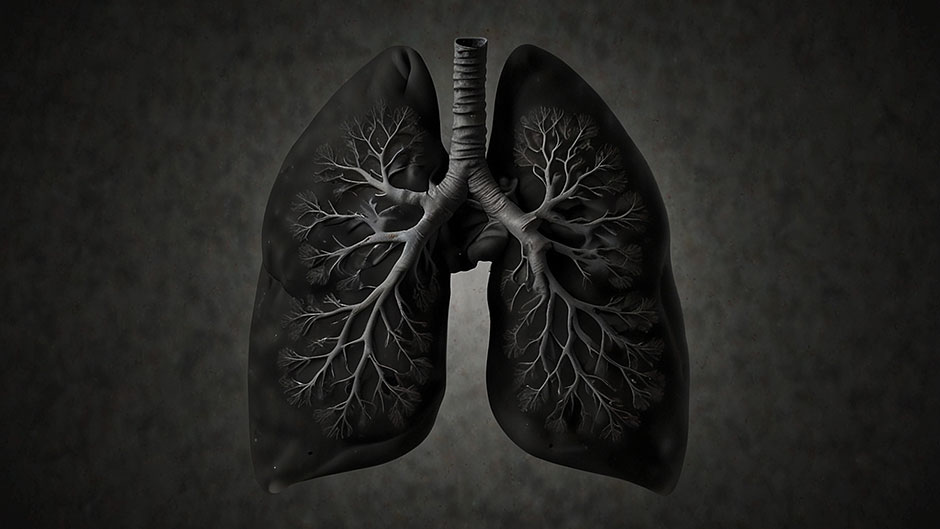Table of Contents
- 1. Breathing Exercises
- 2. Running
- 3. Weight Training
- 4. Cardio
- 5. Diet
- 6. Fruits
- 7. Quit Smoking
- 8. Quit Alcohol
- 9. Yoga
1. Breathing Exercises
Let’s discuss something we do every single day: breathing.
Though it might seem so basic that we don’t give it much thought, the things we breathe in can actually have a significant impact on the health of our hearts and lungs. You can both relax your mind and give your body the oxygen it needs to function better just by taking slow, deep breaths.
Let’s see How Does Exercise Improve Lung Function?
The breathing practice known as diaphragmatic breathing, or belly breathing, is very good for your lungs.
You see, the diaphragm—the muscle directly behind your lungs—is employed when you inhale deeply.
This type of breathing facilitates full exchange of oxygen, meaning that the incoming oxygen enters your lungs deeply and the carbon dioxide is actively exchanged.
This will eventually strengthen your diaphragm and improve the function of your lungs.
The term pursed-lip breathing refers to the second style of breathing. Simply inhaling with your nose and exhaling slowly through pressed lips, as if you were smothering a light, is about as basic as it gets.
By reducing your breathing, you may maintain your aviation routes open for a longer period of time, which eases the strain on your heart. While these activities are good for everyone, those who have long-term lung problems such as COPD or asthma can benefit most from them.
Work your way up from just a few minutes each day. You might feel a little more in control, both emotionally and physically.
2. Running
Now let’s really get going! One of the best workouts for heart and lung health is running.
Think of your lungs as air passages and your heart as a siphon. They have to work harder as you run, which gradually builds their strength and efficiency.
Your heart needs to pump more blood to your muscles while you run.
This additional strain strengthens your heart in a similar way to how lifting weights strengthens your arm muscle. Stronger hearts don’t need to work as hard to perform daily tasks since they can pump more blood with each beat.
Because of this, runners usually have lower resting heart rates. How about your airways?
They also receive a vigorous exercise. Your body’s need for oxygen increases as you run, so your lungs have to work harder to take in more air.
With time, your lung capacity increases, enabling you to breathe in more oxygen. This is why consistent practice will reduce your likelihood of becoming out of breath, even if you do so at first.
However, remember that you are not required to begin running.
If you’ve never run before, begin by walking and jogging simultaneously, then progressively increase the duration of your running sessions. Your lungs and heart will appreciate it.
Also Read – Mom And Daughter Relationship Problems (2024)
3. Weight Training
When we consider ways to improve the function of our hearts and lungs, weight training may not be the first thing that comes to mind.
I have to tell you, though, that it is actually more important than you might realize. Power lifting is associated with strengthening your complete cardiovascular system in addition to merely increasing muscular mass.
You must realize that practicing cardio exercises and lifting weights both increase heart rate.
Nevertheless, it also builds lean mass, which helps your body consume more calories when you’re not exercising anyway. Additionally, having more muscle means that your heart doesn’t have to work as hard to pump blood throughout your body.
Over time, this suggests a more steady and fruitful heart.
Furthermore, lifting weights can improve lung function. Lifting weights increases the amount of oxygen your muscles need, which means your lungs have to work harder to supply it.
This can gradually expand your lung capacity, much like jogging does. Start with less weights and pay close attention to your form. Gradually raise the weight as you gain strength. And don’t worry, lifting weights doesn’t have to be a big part of weight training.
Even bodyweight workouts like squats and push-ups can provide a wonderful workout for your heart and lungs.
4. Cardio
Cardiovascular exercises are a one-stop shop for strengthening the heart and lungs.
Any activity that increases your heart rate and maintains it there for an extended period of time, such as brisk walking, cycling, swimming, or even dancing, is referred to as cardio. The wonderful thing about cardio is that it strengthens your heart by making it work harder.
Your heart becomes stronger the harder it works, just like any other muscle. A stronger heart can pump more blood with each beat, increasing its effectiveness even while you’re merely lounging on the couch.
Your lungs capacity can be increased with the help of cardiovascular activity.
When you breathe quicker and deeper during cardio, your lungs expand to take in more oxygen.
This facilitates the transfer of oxygen from your lungs to your blood and increases the capacity of your lungs to hold oxygen. Over time, you’ll find that activities that used to make you gasp for air become considerably easier for you.
The fact that cardio need not be boring is its best feature. Engage in a frequent activity you enjoy, such as dancing around your living room or going on a hike or bike ride. You’ll enjoy yourself while fortifying your heart and lungs.
5. Diet
A healthy diet is crucial for lung and heart health. A major factor in how well your heart and lungs function is what you eat. Think of your body as a car. Fuel is like food; if you use the wrong kind of fuel, your automobile won’t run as well.
A diet rich in fruits, vegetables, lean proteins, and whole grains may be very beneficial to your heart and lungs.
Antioxidant-rich foods like berries, spinach, and almonds can help lower inflammation and protect your heart.
Omega-3 fatty acids, which are abundant in salmon, have the ability to lower blood pressure and reduce the risk of heart disease.
However, it’s also important to consider what you don’t consume in addition to what you do. Reduce your intake of red meat and butter, two foods high in saturated fat, to lower cholesterol and lower your risk of heart disease.
Reducing salt intake can help prevent hypertension, which is a major risk factor for cardiac problems. Don’t forget to stay hydrated by drinking lots of water. Water is essential for many bodily functions, including the heart and lungs.
Drinking enough water facilitates better breathing by maintaining the moisture in your lungs and facilitating easier blood flow.

6. Fruits
Let’s concentrate on just one aspect of your diet plan: organic foods. Similar to natural candies, fruits are rich in nutrients that are essential for the health of your heart and lungs.
Fruits provide vitamins, minerals, and antioxidants that can protect your heart. Citrus fruits, like oranges, are rich in vitamin C, which is believed to reduce the risk of heart disease. Berries such as strawberries and blueberries include antioxidants that can help reduce inflammation and blood pressure.
Then there are foods like avocados and bananas that are high in potassium.
Potassium is a crucial vitamin for heart health since it aids in blood pressure regulation.
Controlling your blood pressure lowers your risk of heart disease because it requires less effort from your heart. Still, fruits are beneficial to your heart and lungs. It has been demonstrated that antioxidants, such as those in apples, enhance lung function.
Furthermore, the fiber in fruits keeps blood sugar levels stable, avoiding heart-pounding spikes and falls. So grab a slice of fruit the next time your sweet hunger strikes. Your heart and lungs will be happy that you did.
Also Read – How Sleepless Nights Affect Your Body? (2024)
7. Quit Smoking
The only thing that can actually help your heart and lungs is giving up smoking. Smoking is one of the worst things you can do to your health, particularly for your heart and lungs.
The good news is that your body will mend virtually instantly and that it’s never too late to give up. When you smoke, the chemicals in cigarettes damage your heart and blood arteries, making your heart work harder than it has to.
This increases your risk of heart disease, stroke, and heart attacks. But within a few days of stopping, your heart starts to heal. Your heart rate and blood pressure start to decrease, which lowers your risk of having a respiratory failure.
Smoking damages your lungs’ tiny air sacs, which makes it harder for them to exchange oxygen and carbon dioxide. This could lead to both lung cancer and chronic obstructive pulmonary disease (COPD). When you quit smoking, however, your lungs start to mend themselves.
In a few weeks, you’ll notice an improvement in lung function and an easier time breathing. The challenge of stopping smoking is undeniable. However, it’s totally achievable with the appropriate tactics and assistance.
Furthermore, every day you quit smoking, your heart and lungs get a little bit stronger.
8. Quit Alcohol
Let’s talk about booze as well.
Even though a couple of glasses of wine might not seem like much, drinking too much alcohol can have detrimental consequences on the heart and lungs. The good news is that you can still make a big difference by cutting back or giving it up completely.
Alcohol can cause your heart to race and elevate your pulse. This can eventually lead to heart disease, cardiovascular collapse, and irregular heartbeats. However, when you reduce your alcohol intake, your blood pressure begins to drop, which lessens the strain on your heart.
Overindulgence in alcohol might also harm your lung system.
Alcohol can damage the immune system, increasing your risk of lung infections including pneumonia.
Additionally, it may alter your breathing pattern, particularly at night. People who drink a lot are more likely to have sleep apnea, a disease when their breathing regularly stops and starts during the night. By giving up alcohol, you allow your heart and lungs to heal and get stronger. Additionally, your body will start to repair as soon as you quit smoking.
You’ll sleep better, have more energy, and lower your risk of developing major health problems.
9. Yoga
And last but not least, let’s discuss yoga, which is a mental, physical, and cardiac exercise. Yoga combines physical postures with deep breathing and meditation, which makes it a valuable tool for improving overall wellbeing.
When you practice yoga, you’re working with your strength, flexibility, and balance—all of which are important for a healthy heart. Some yoga poses, such as those that involve winding, can also help to slow down the heart rate and improve alignment.
Yoga’s emphasis on deep breathing helps to lower stress, a significant risk factor for heart disease, and calm your nervous system.
Yoga has the potential to improve lung function and capacity.
Yoga’s deep breathing techniques assist expand your lungs and improve your body’s ability to use oxygen. Over time, this may facilitate simpler breathing for you and extend your endurance during other physical activity.
Beneficial to your heart and lungs is yoga’s effect on your emotional well-being. When you’re calmer and less anxious, your heart and lungs don’t have to work as hard. Consequently, doing yoga on a daily basis can benefit your heart and lungs, regardless of your level of experience.
Read us on Medium.




